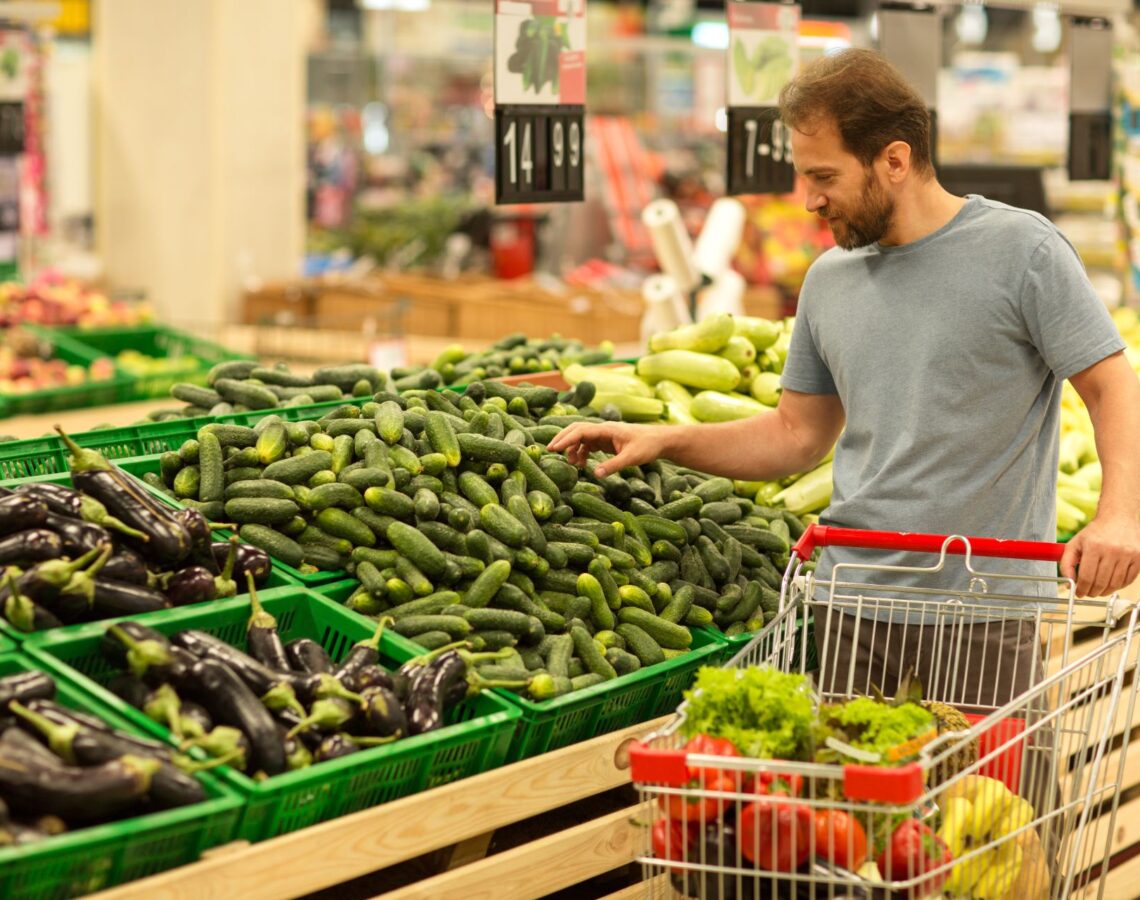New ABS data reveals mixed report card on food consumption

New data from the Australian Bureau of Statistics (ABS) reveals a mixed report card on increases and decreases across a range of food groups consumed by Australians.
The latest release from the Apparent Consumption of Selected Foodstuffs, Australia report gathered data from the 2023-24 financial year and provides estimates of apparent consumption per capita of selected foods based on sales of products in Australia.
While some vegetables, such as carrots, sweet potato and beetroot had recorded drops in per capita consumption compared to the year to June 2023 (-4.7% to 22.1 grams per day), some small increases were observed among other vegetables, such as:
- Avocado, capsicum, cucumber, zucchini, and mushrooms increased 0.9 grams (2.3%) to 40.5 grams per day
- Leaf and stalk vegetables (such as lettuce, spinach and celery) increased 0.6 grams (5.0%) to 12.5 grams per day
- And cabbage, cauliflower and similar brassica vegetables, increased 0.4 grams (3.1%) to 13.1 grams per day.
‘It is a small uptick, but Health and Wellbeing Queensland certainly welcomes the increase in these vegetables,’ said Dr Robyn Littlewood, CEO of Health and Wellbeing Queensland.
‘We know diets rich in fruit and vegetables protect against high blood pressure, obesity, heart disease, stroke, type 2 diabetes and some cancers.’
In 2024, it was revealed that overweight and obesity is now the leading risk factor contributing to the burden of disease in Australia.
- Queensland has the second highest rate of obesity in Australia (34.6%).
- About 1 in 3 children are living with overweight or obesity (32.6%).
- The proportion of children living with a healthy weight has declined over the last decade.
Overweight and obesity are associated with an increased risk of chronic diseases and are linked to multiple cancers.
‘There is no question – eating more vegetables is one of the best things you can do for your health,’ Dr Littlewood said.
‘Health and Wellbeing Queensland’s focus is to make healthy happen for all Queenslanders, and to reduce the impacts of chronic disease.
‘We work closely with the Queensland health System, with government, communities and other sectors to improve the environments people live, learn, work, play and age – helping to create a healthier Queensland.’
- Health and Wellbeing Queensland’s Pick of the Crop program has reached over 200 schools across Queensland and is designed to increase children’s consumption of veggies and willingness to try new food.
- A Better Choice is designed to make it easier for Queenslanders to access healthy food and drink options in places outside the home.
- Gather + Grow is focused on improving food security in remote Aboriginal and Torres Strait Islander communities in Far North Queensland and the Lower Gulf by improving the availability and accessibility of healthy food.
‘Additionally, we have invested significantly over the last five years to support prevention programs including the Queensland Country Women’s Association Country Kitchens program, 10,000 Steps, My health for life, the Queensland Association of School Tuckshops Healthier Tuckshops program and Deadly Choices,’ Dr Littlewood said.
The Australian Guide to Healthy Eating recommends a balanced diet that is made up of five major food groups:
- Grain (cereal) foods, mostly wholegrain and/or high cereal fibre varieties
- Vegetables and legumes/beans
- Fruit
- Lean meats and poultry, fish, eggs, tofu, nuts and seeds and legumes/beans
- Milk, yoghurt, cheese and/or alternatives, mostly reduced fat.
The latest 2023–24 data shows Queenslanders are still not getting enough fruit and vegetables, with average daily consumption sitting at just 2.2 serves of vegetables (out of a recommended 5) and 1.3 serves of fruit (out of a recommended 2).
Despite total dietary energy intake staying steady at around 8,667 kilojoules per person per day, discretionary foods – those high in energy and low in nutritional value – continued to make up a large share of the diet, contributing 38.5% of total daily energy, similar to the previous year.
There were notable shifts in eating habits:
Snack foods rose by 4.7%
Soft drink consumption increased by 2.2%
Electrolyte and energy drinks jumped by 9.3%
Confectionery consumption fell by 3.9%
Fats and oils declined by 4.2%
Overall, fruit and vegetable intake showed little improvement.
‘For the health and wellbeing of Queenslanders’, we need to see a shift – fewer discretionary foods and far more vegetables on our plates,’ Dr Littlewood said.
‘Eating more vegetables each day isn’t just good for you now – it’s one of the most important steps you can take to improve your long-term health.’
Media contact:
0439 599 210.
Image credit: AusVeg.


